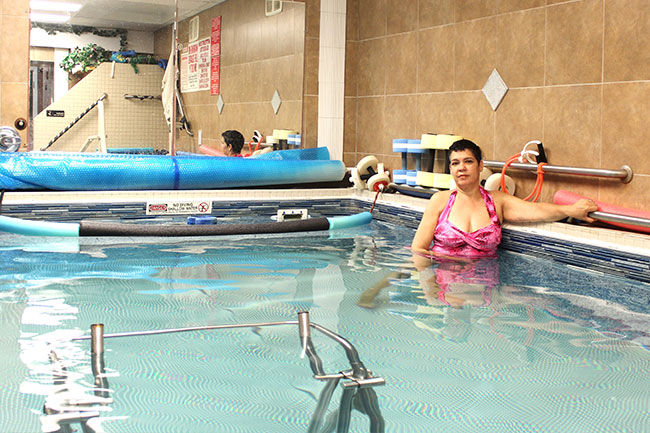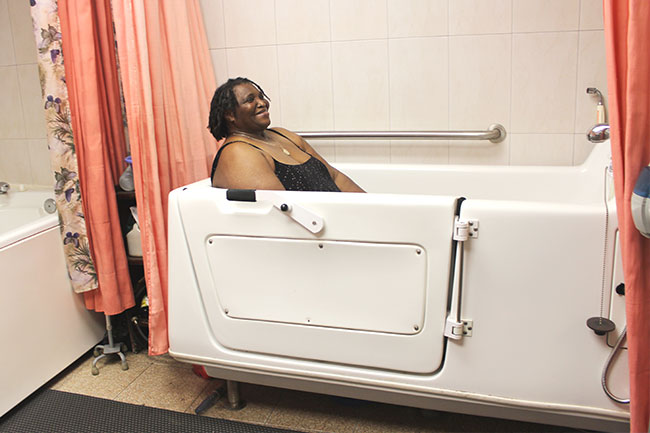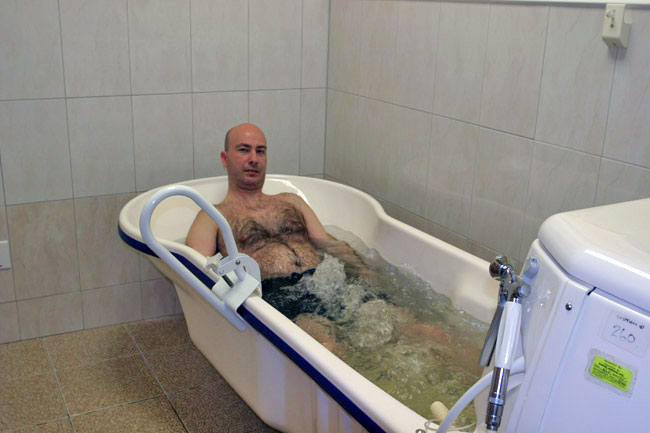
Aquatic Therapy or Pool Therapy consists of an exercise program which is performed in the water. This form of therapy is useful for a variety of medical conditions due to special water properties such as natural resistance and weightlessness. Warm water also adds comfort and relaxation. These special properties provide a safe environment for treating many different neurological and musculoskeletal injuries. Aquatic Therapy has been utilized for thousands of years and is known to significantly reduce pain, improve joint motion and allow muscle relaxation.
Below are a few key components of Aquatic Therapy Program:
Muscle Strengthening
Water exercise can strengthen back, abdominal, and hip muscles, which are all key for a healthy spine. The flow of water resists movement and functions similarly to weight training, thus it strengthens muscles.
Increasing Joint Range of Motion
The buoyancy of water helps take the load off our joints. It creates a significant degree of weightlessness, allowing the body to perform movements more easily. To develop range of motion, the goal is to take each body part through its full path of motion. However, even with the weightlessness provided by water, movements should be performed gently and slowly to avoid re-injury.
Core Stabilization Exercise
The pool is a great place for working on the lower back and for core strengthening of the body. Exercises that work the hips are good for stabilizing the lower back. Water walking, kicking, and performing abdominal exercises are common. In general, trunk stabilization is accomplished by first establishing a neutral spine, and then moving legs and arms while the spine stays where it is. Any water depth will provide benefits. Aquatic equipment such as floatation belts and dumbbells can support patients by accentuating access to the core muscles that stabilize body posture. Another way to develop trunk stabilization in the water is by balancing. Patients can try to sit, kneel, or stand on certain aquatic equipment such as kickboards or swim bars (long dumbbells). Balance exercises in the water will cause all muscles in the trunk to work to hold patients upright.

Motivation
Exercising in water is relaxing, pleasant, and entertaining. The buoyancy of water takes weight and load off the joints, which can reduce joint pain and can heal or manage back problems. Has your doctor or physical therapist advised you to avoid weight bearing and/or high impact exercise until your back heals? Many active people who are injured fret over lost time at the gym. By substituting your normal exercising routine with water workouts, you can minimize the loss of fitness due to the reduced activity. You can also use the opportunity to strengthen certain muscles such as abdominal, back, and hip muscles. Water aerobics can keep your heart and lungs fit. Deep water exercises wearing a flotation device and using other pieces of aquatic equipment can help you continue to get strong even through periods of reduced activity. Because you are not doing weight-bearing exercises when you workout in the water, the chances of worsening your injury is greatly reduced.
Decreased Pain
When you workout in water, you are immersed in a supportive medium that minimizes joint pain and facilitates movement. This works especially well for people with arthritis.
At Aquatic Rehabilitation Center, we are equipped with an aquatic-access lift for those patients who are unable to enter the pool on their own. We also have private showers and lockers for the comfort and privacy of all our patients.
Hydrotherapy

Hydrotherapy is the use of water to revitalize, maintain, and restore health. Hydrotherapy treatments include hot or cold baths, foot baths, and the application of cold and hot water compresses. The recuperative and healing properties of hydrotherapy are based on its mechanical and/or thermal effects. Hydrotherapy exploits the body's reaction to hot and cold stimuli, the protracted application of heat, and the pleasant sensation of pressure created by water submersion. The combined results include stimulation of the immune system, production of stress hormones, invigoration of blood circulation and digestion, and reduction of pain sensitivity. Generally, heat calms the body, slowing down the activity of internal organs. Cold, in contrast, stimulates and invigorates, increasing internal activity. If you are experiencing tension in your muscles and anxiety from stress, a hot shower or bath is recommended. If you are feeling tired and stressed, a warm shower or bath followed by a short, invigorating cold shower can help stimulate your body and mind. Submersion in water produces a sensation of weightlessness. Your body is relieved from the constant pull of gravity. Water also has a hydrostatic effect. It produces a massage-like sensation as the water gently kneads your body. Moving in water stimulates touch receptors, boosting blood circulation and relaxing tight muscles.
Mineral Baths

Regular bathing in mineral springs is considered by many cultures to be an important factor in health care. At Victory Clinic, minerals are combined with warm water to simulate natural mineral springs bathing. Taking mineral baths can provide physical and psychological benefits including: reduced stress, increased blood circulation, muscle strengthening, and essential mineral replenishment. Mineral baths are an effective natural remedy for pain relief. Sodium, calcium, sulfur, and magnesium are used with bathing water to create excellent therapeutic baths.
Back